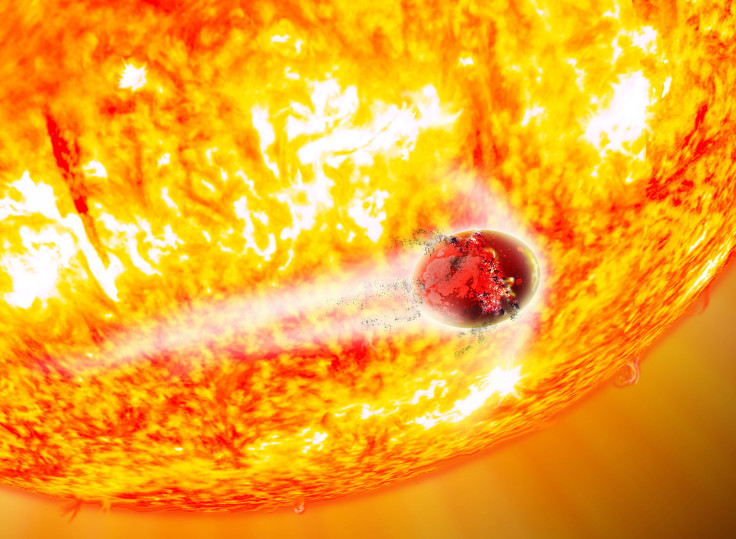Cosmic Snack: Planets Kepler-56b And Kepler-56c Will Be Swallowed Whole By Host Star

There's bad news for two planets in the Kepler-56 system as they will be swallowed whole by the host star in the, astronomically speaking, near future. In a new study, astronomers have estimated the “time of death” for Kepler-56b and Kepler-56c.
Led by astronomer, Gongjie Li, from the Harvard-Smithsonian Center for Astrophysics (CfA), the team of researchers calculated when the two exoplanets will be devoured by the star they currently orbit. According to the astronomers’ calculations, the star, Kepler-56 is expanding and it is currently four times the size of the sun, notes CfA. As Kepler-56 gets larger it will also exert more gravitational influence on Kepler-56b and Kepler-56c, pulling the planets closer until their demise. Kepler-56b is expected to be swallowed by Kepler-56 in 130 million years while Kepler-56c will be swallowed in 155 million years.
"As far as we know, this is the first time two known exoplanets in a single system have a predicted 'time of death," Li said in a statement.
Currently, Kepler-56b is in a 10.5-day orbit around Kepler-56 while Kepler-56c is in a 21.4-day orbit around the star. For the exoplanets, their death will be quite slow and painful. According to the CfA, as the two planets get closer to Kepler-56, temperatures will increase dramatically and the atmospheres of Kepler-56b and Kepler-56c will evaporate. The shape of the planets will also be altered due to the stellar tides, from spherical to an “egg” shape.
The astronomers will continue to observe the multi-planet Kepler-56 system as it is a “tilted,” a surprising and first-of-its-kind discovery. The planets of the Kepler-56 system were discovered by NASA’s Kepler space telescope via the transit method, measuring the drop in brightness as the planet passes in front of its host star. The planets and star of the Kepler-56 system formed from the same gas disk and should be lined up, much like our solar system, but Kepler-56b and Kepler-56c are tilted away from their host star. Future observations could help determine the reason for the tilted nature of the system. The Kepler-56 system will have one survivor, Kepler-56d, a gas giant with a 3.3-year orbit that puts it safely out of harm’s way.
According to CfA, the fate of Kepler-56b and Kepler-56c serve as a parallel to what will occur in our solar system. Our sun will become a red giant star, around five billion years from now, and will swallow Mercury and Venus. According to recent predictions, Earth will become uninhabitable in approximately 1.75 billion years as increased temperatures will evaporate the oceans.
Li’s research was presented at a meeting of the American Astronomical Society.
© Copyright IBTimes 2025. All rights reserved.






















